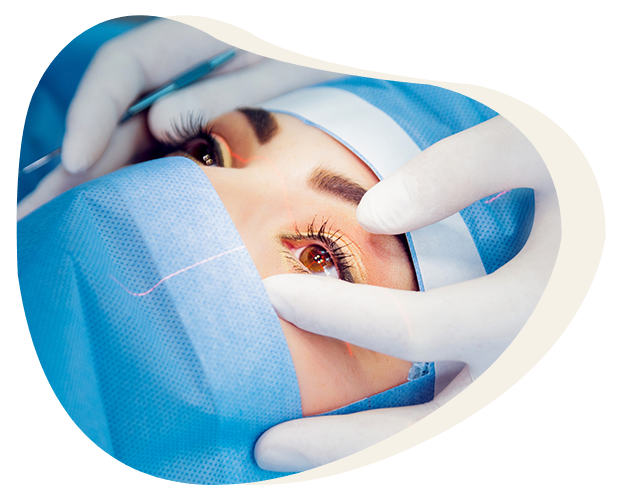Endoscopic DSR (Tear Sac Surgery)
Endoscopic DSR What is Endoscopic DSR (Tear Sac Surgery)?
The fluid secreted by the lacrimal gland is absorbed and passes into the lacrimal sac and from there flows into the nasal cavity through the tear duct. When the tear duct is blocked for any reason, tears can accumulate in the eye and flow between the eyelids to the cheek. This can lead to infection in the tear ducts, causing burring, pain, redness, flushing and swelling.
Although it can be seen at any age, it is often seen in newborn babies and especially in women after menopause. Tear duct obstruction seen in newborn babies is called congenital, while tear duct obstruction seen in adults is called acquired.
In adults, instead of opening the blocked duct, a new pathway is created between the tear sac and the nose. The surgery can be performed through the skin or endoscopically through the nose. Endoscopic surgery is performed without scars and stitches.

Suitable Candidates for Endoscopic DSR (Tear Sac Surgery)
Tear Sac Surgery (DSR) in the distal (lower) part of the esophagus is a minimally invasive surgical procedure aimed at preventing the escape of stomach contents into the esophagus. This method prevents acidic stomach contents from escaping back into the esophagus by tightening the muscle ring in the lower part of the esophagus. Suitable candidates for endoscopic DSR are often individuals who struggle with symptoms of chronic gastroesophageal reflux disease (GERD), esophageal inflammation or other complications caused by reflux. This procedure aims to improve patients’ quality of life, relieve GERD symptoms and reduce the risk of long-term complications. However, as each patient situation is different, the feasibility and effectiveness of this method should be evaluated by a specialist.
Contact Us!
Endoscopic DSR (Tear Sac Surgery) Recovery Process
The recovery process after endoscopic DSR (Tear Sac Surgery) often varies depending on the individual’s general state of health, the complexity of the surgical intervention and individual responses. This minimally invasive surgical procedure offers a faster recovery than traditional surgical methods. After the operation, mild pain and discomfort may be experienced, usually in the first few days. To support the healing process, it is important to take the medication prescribed by the doctor regularly, avoid certain activities and pay attention to the diet. Full recovery can take from a few weeks to several months. Endoscopic DSR usually relieves patients’ acidic reflux symptoms and improves their quality of life. However, following the doctor’s instructions in the postoperative period is critical to support a successful recovery.

